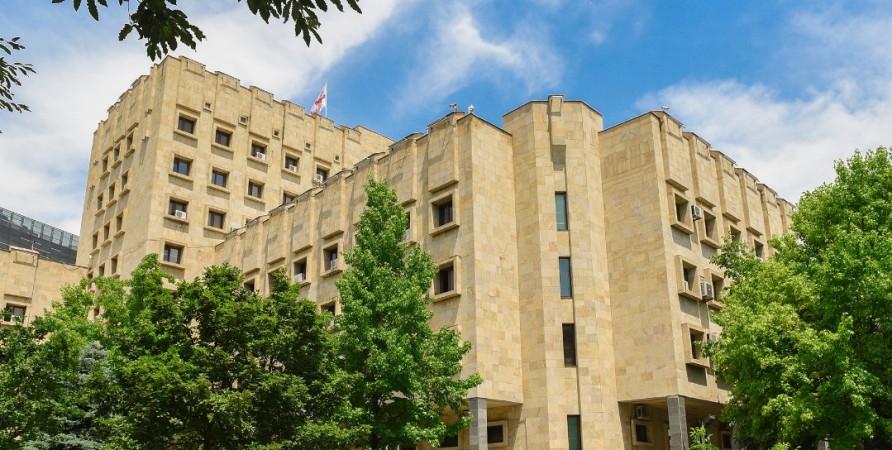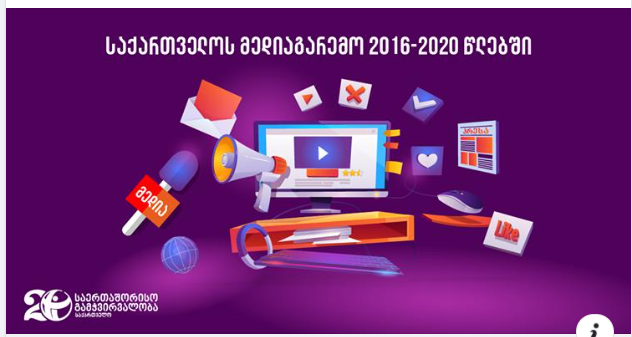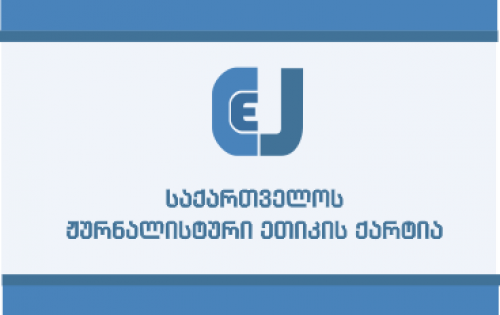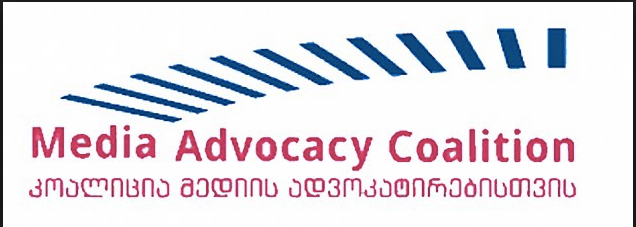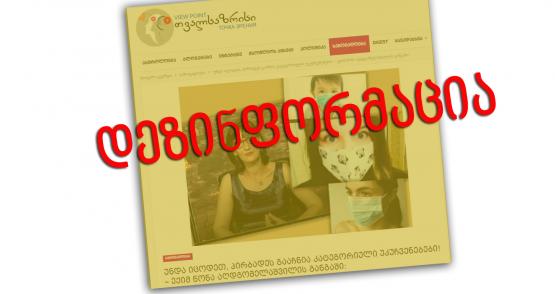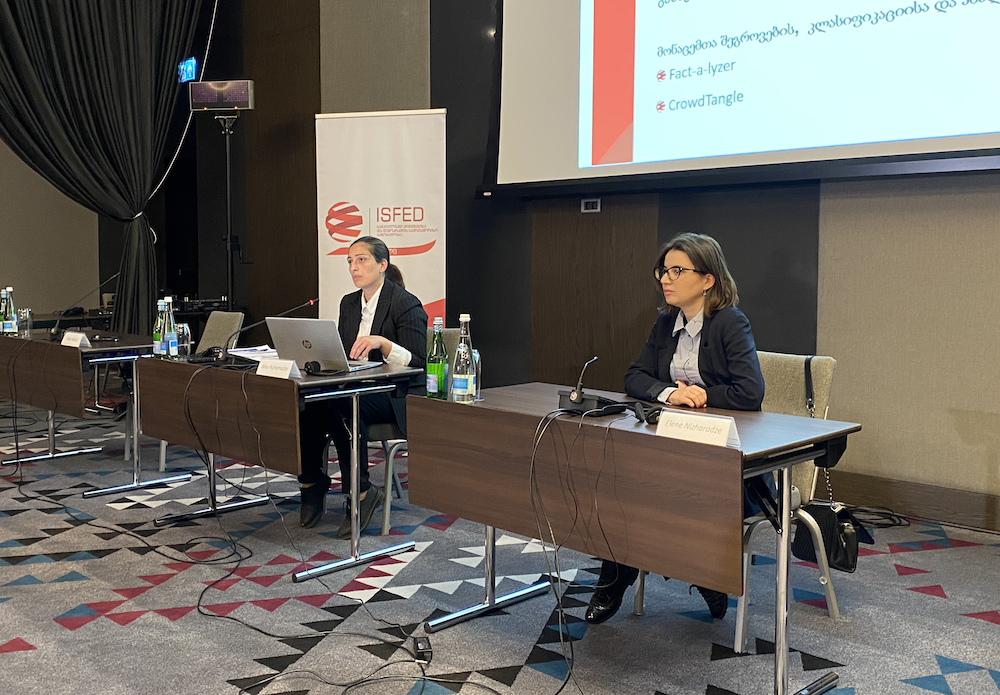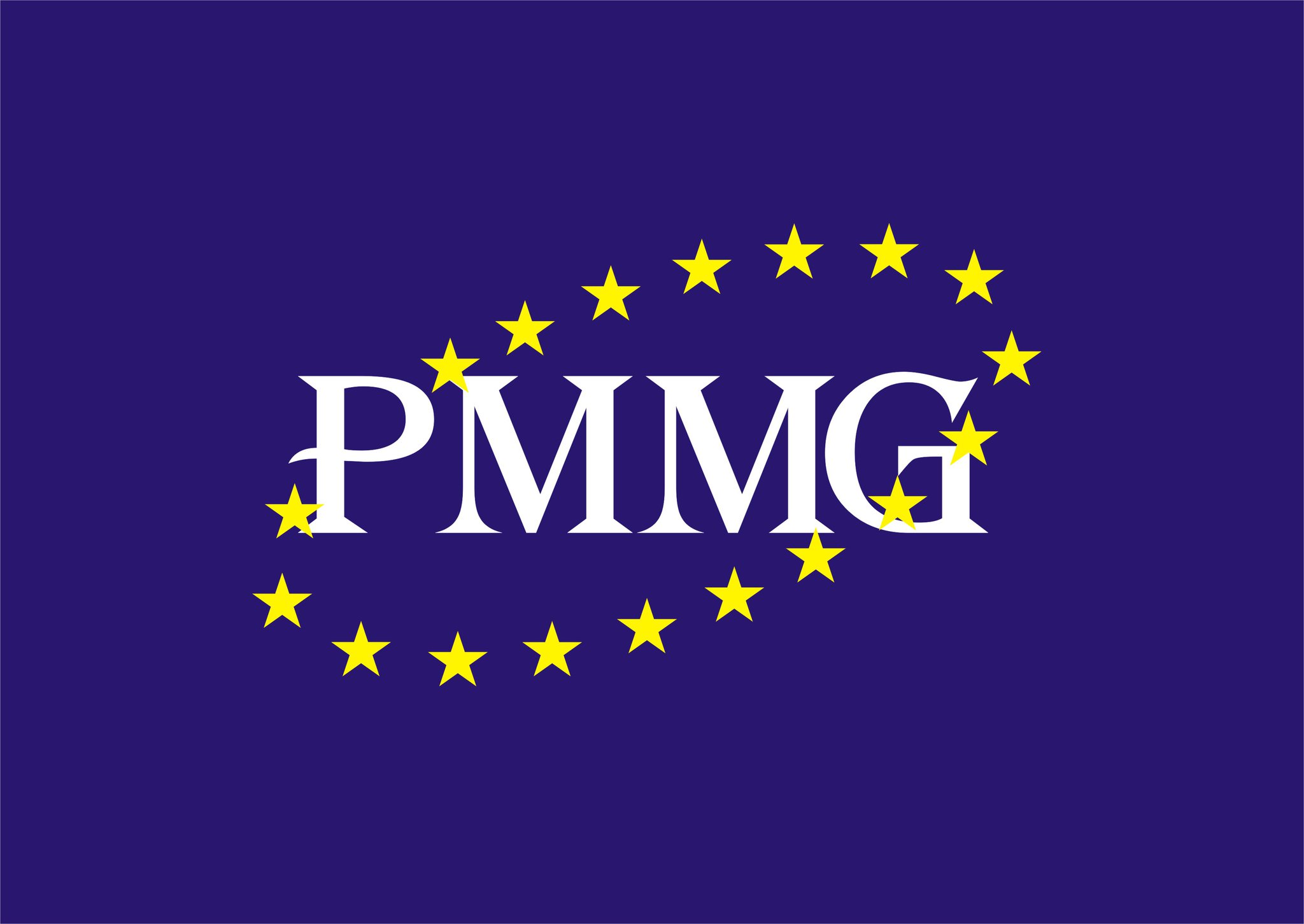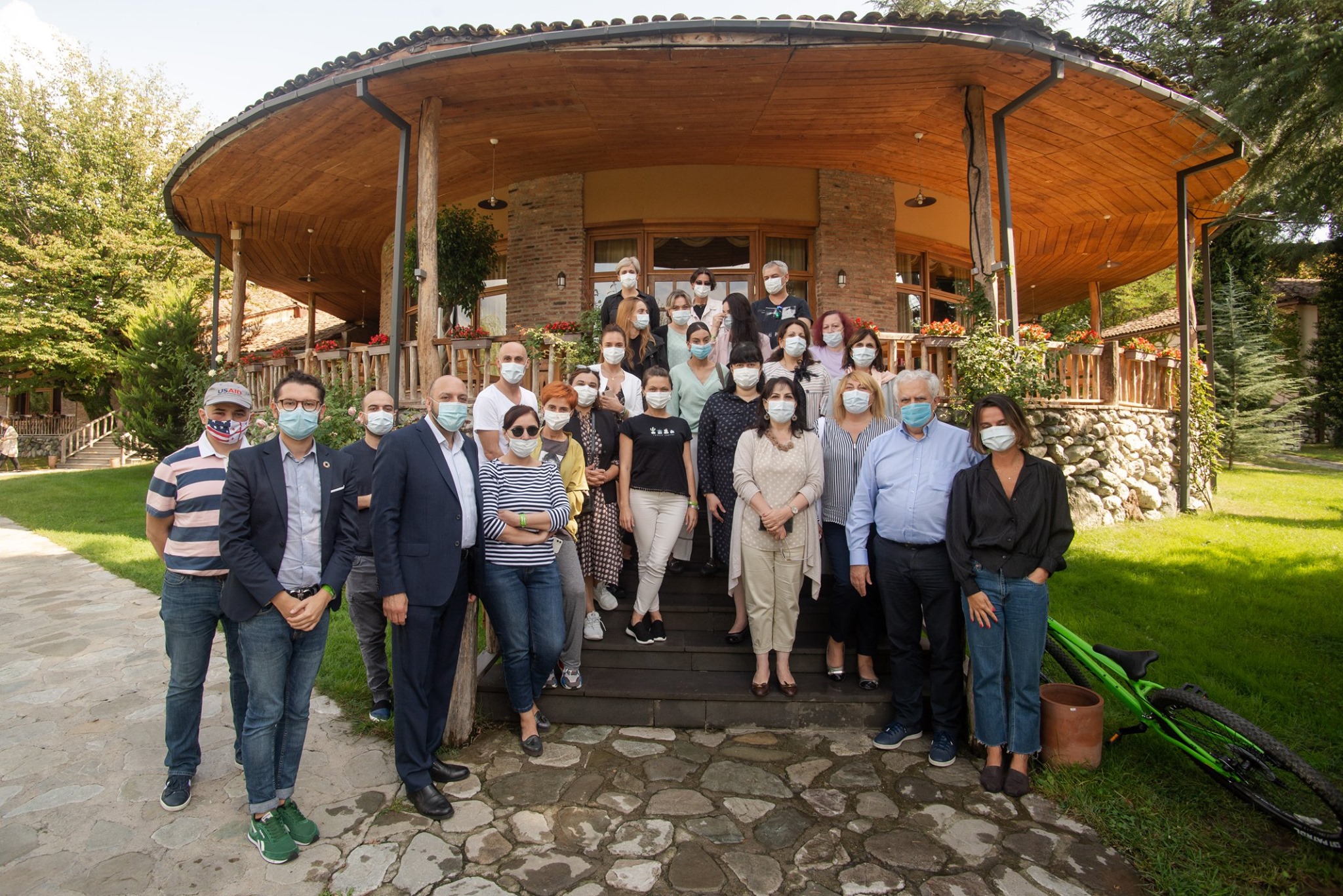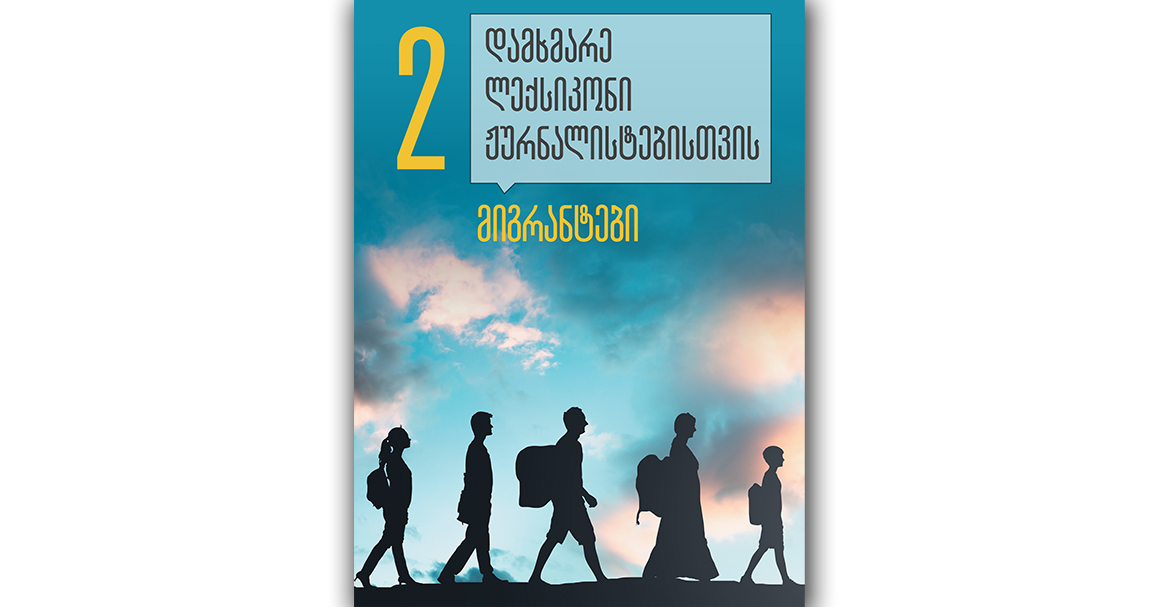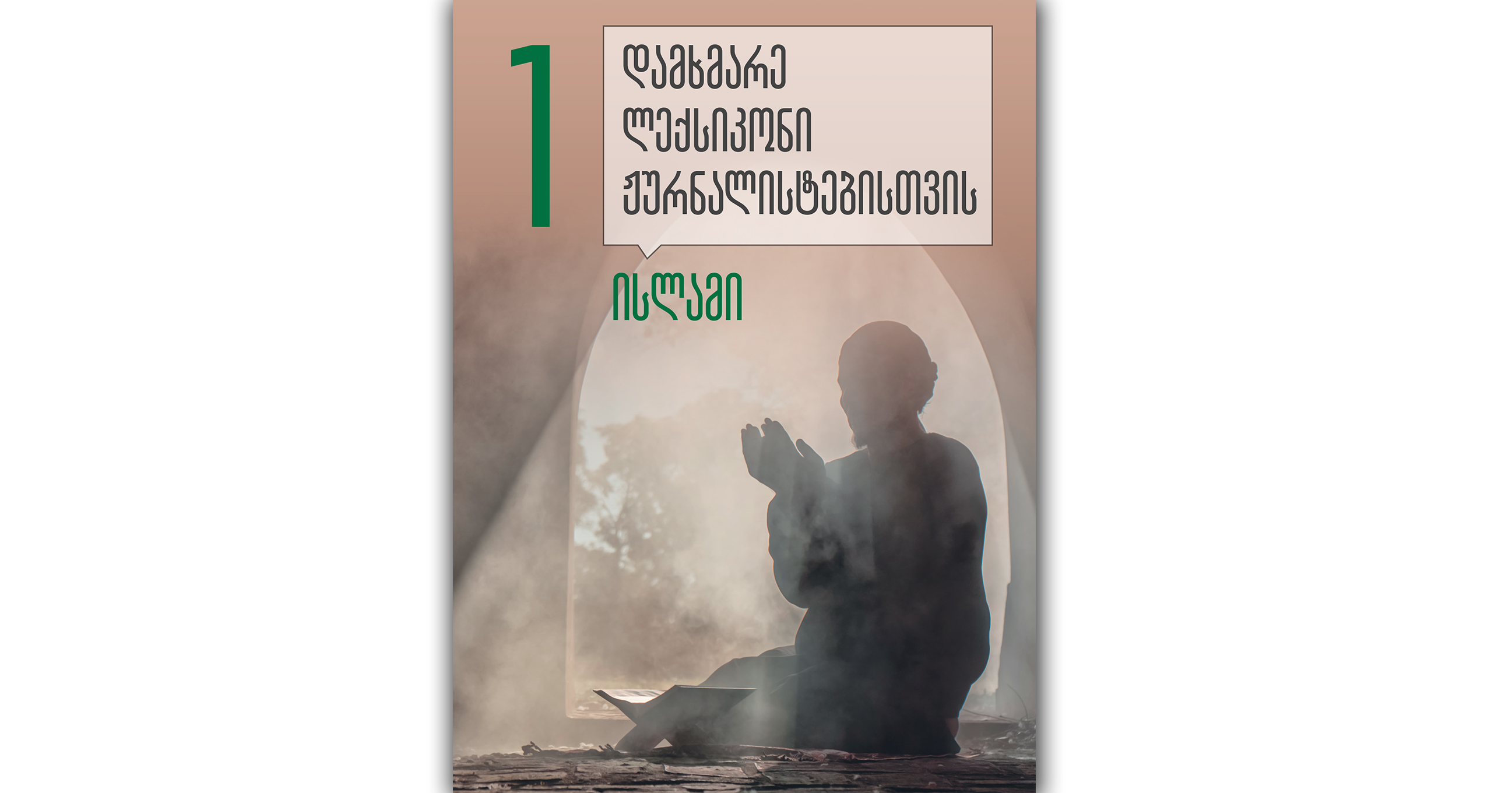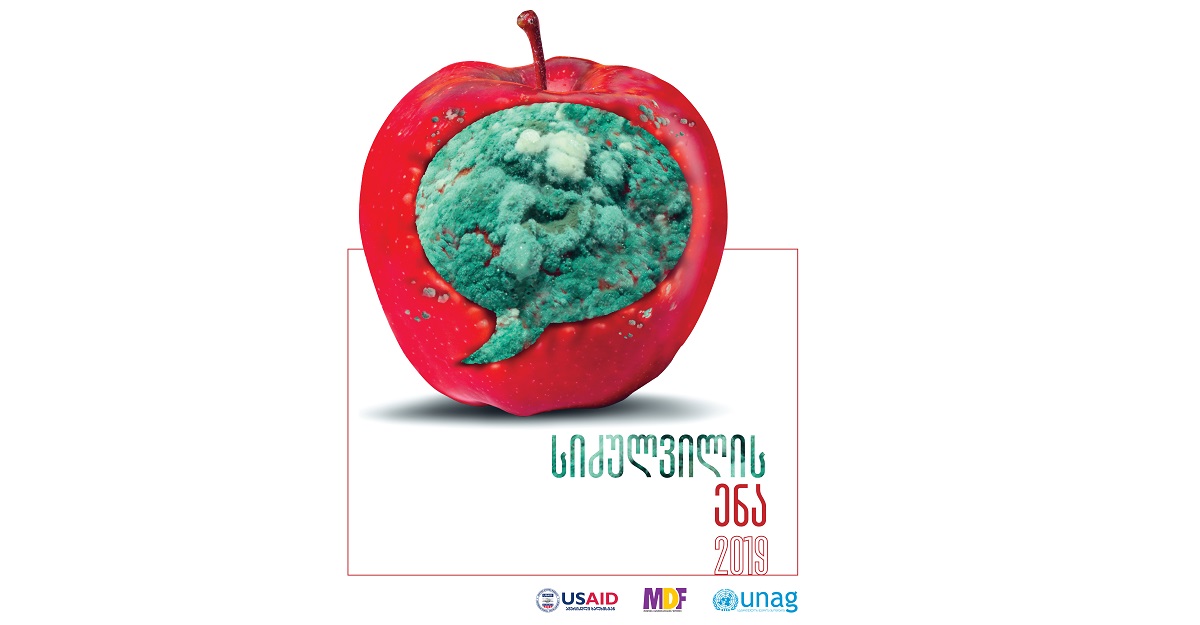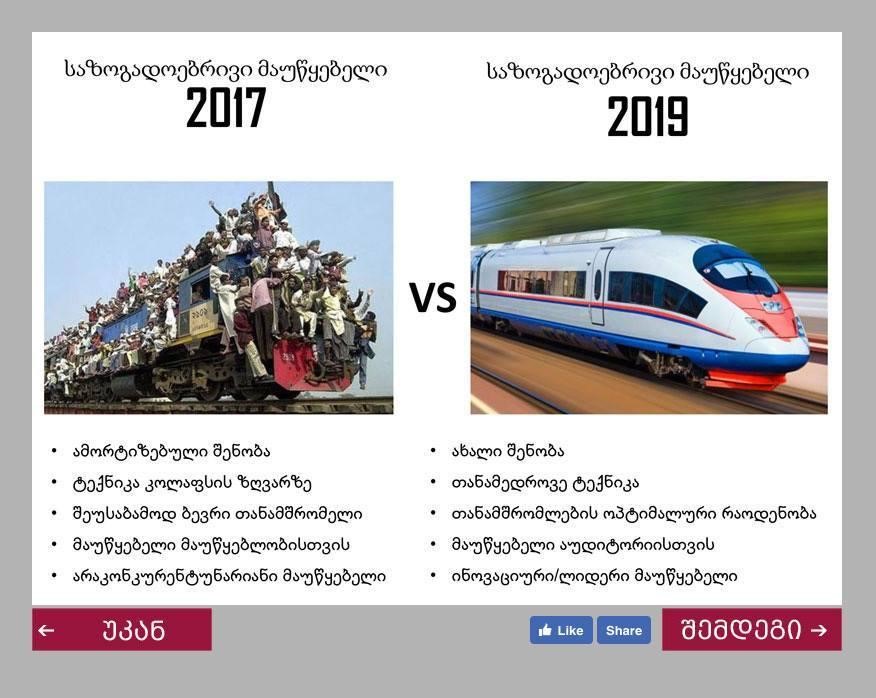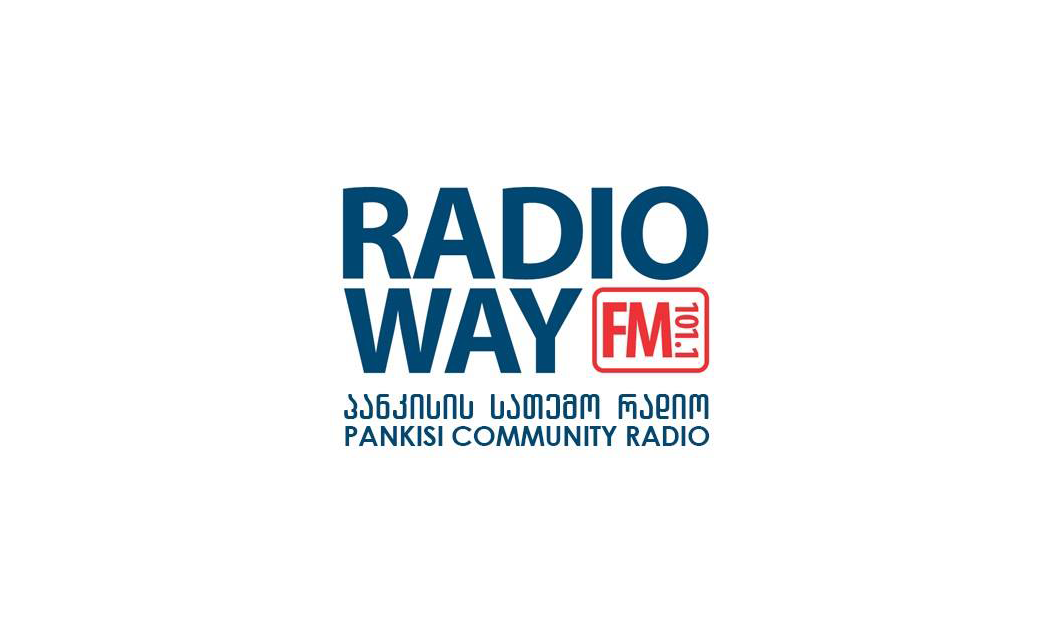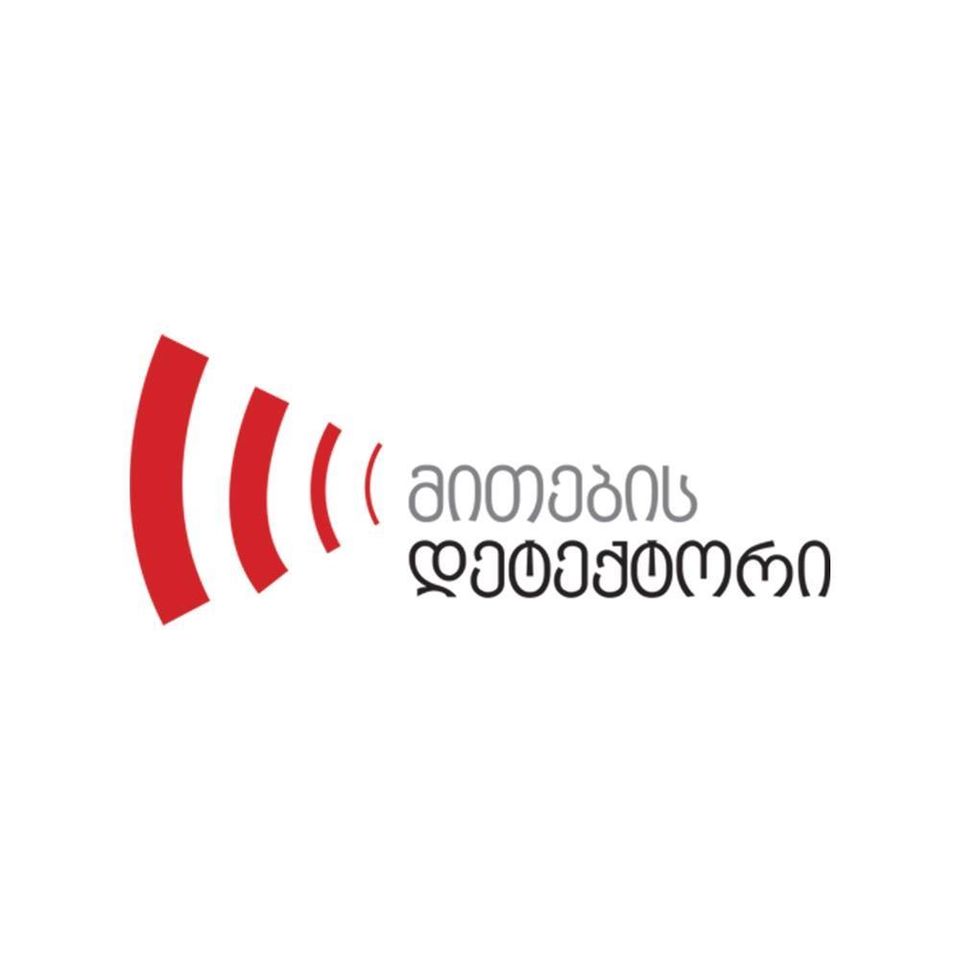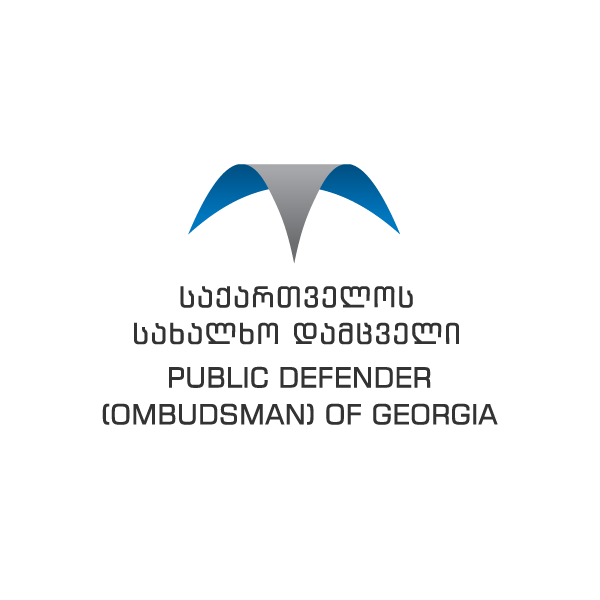News
Tbilisi. On October 21, 2020, the Public Defender of Georgia addressed the Prosecutor General of Georgia with a proposal to launch an investigation into the alleged persecution of the employees of the Public Broadcaster Adjara Television and Radio.
“Examination of the circumstances of the case revealed that the employees of the Adjara TV were persecuted for their different opinions, in particular, for openly expressing critical views on the decisions made by the management”.
Read more…
Source: ombudsman.ge
Tbilisi. Transparency International Georgia appraises the state of the media in Georgia prior to the elections, as a rule.
“In this case, there has been carried out an appraisal of the period from the 2016 parliamentary elections to the present (to the 2020 parliamentary elections), which makes it clear that approaches of “Georgian Dream” towards the critical media have become stricter than those in the previous reporting period”, - is stated on the website of the organization.
Read more…
Source: transparency.ge
Tbilisi. The Media Development Foundation (MDF) publishes a study on financial transparency of media that reflects 2019 data.
“The report, which is published annually by the Media Development Foundation, deals with revenues declared by the broadcast media as required by law, on the one hand, while on the other hand, with the practice of allocation of budgetary funds within media aiming at disseminating advertisements”, - is stated on the website of the organization.
Read more…
Source: mdfgeorgia.ge
Tbilisi. The Georgian Charter of Journalistic Ethics expresses its concern in regard to a verbal abuse of a journalist of an online publication “Batumelebi” committed by Jumber Vardmanidze, Mayor of Khelvachauri.
“According to disseminated information, Mayor got irritated after a journalist asked a question related to usage of an official vehicle of Mayor to attend pre-election meetings. He verbally insulted and brutally swore the journalist right after he heard the question. The Charter considers it important to respond immediately to such cases so as to ensure that the syndrome of impunity does not become contagious to other public figures”.
Read more…
Source: www.qartia.ge
Tbilisi. On October 7, there was made a presentation of a new study conducted by the Global Disinformation Index (GDI) and the Media Development Foundation (MDF).
The study contains evaluation of media market risk ratings in Georgia and refers on the analysis of 24 Georgian-language media sites.
“The study, conducted in April-July 2020, is based on a disinformation risk assessment methodology developed by GDI. Georgia is among those 10 countries, which were evaluated in 2020 using this methodology”.
Read more…
Source:www.mdfgeorgia.ge
Tbilisi. “Media Advocacy Coalition” considers that the campaign, carried out against “Pankisi Community Radio”, cannot be left without a proper response and that the Government is obliged to take immediate measures in regard to both investigation of the occurred incident and the October 6, 2020 statement of the radio, which further reveals planned steps aiming to interfere in journalistic activities unlawfully.
Read more…
Source: The website of the Coalition in a social network
Tbilisi. The Institute for Development of Freedom of Information (IDFI) publishes a blog post: Disinformation spread in Armenian and Azerbaijani media in regard to the position of Georgia on the Karabakh conflict.
Despite the fact that Georgia maintains neutrality over the military conflict taking place between Armenia and Azerbaijan in Nagorno-Karabakh, there is misinformation in regard to the position of Georgia actively spread in Armenian and Azerbaijani media.
Disseminated disinformation includes news about Georgia providing a path to military equipment sent from Turkey to Azerbaijan. There periodically appear Georgian and Russian-language posts, in which Georgia is accused of the above-mentioned action. Following to spread of similar disinformation, the situation in Javakheti has become tense several times.
”While on September 30, Karen Ohanjanyan, an Armenian politician and Leader of the “Republican Party of Nagorno-Karabakh”, posted disinformation of the same content on his Facebook page accusing Georgia of providing a path to military supplies sent from Turkey to Azerbaijan and stated that Javakheti should declare independence from Georgia. The statement of Ohanjanyan is a clear example of the extent of disinformation in regard to Georgia in the Armenian information space”. In the circumstances of an information war, the organization calls on the government to enhance communication with the local population, international partners, make sure they are informed about developments taking place in the region, declare the official position of Georgia on neutrality and steps taken by the country.
Read more…
Source: idfi.ge
Tbilisi. As Myth Detector informs, on October 3, 2020, Tvalsazrisi ge published an interview with Nona Agdgomelashvili, a therapist and astropsychologist, titled: “You must know that face mask has categorical contraindications! Alarm of Doctor Nona Agdgomelashvili”. In the material, the respondent talks about the disadvantages of using a face mask and notes that face masks can intoxicate humans with carbon dioxide. According to her, face masks maintain their effectiveness only in a sterile environment and not, for example, in public transport.
“The statement, as if a face mask can intoxicate humans with carbon dioxide or its use is effective only in a sterile environment, is not true. As the World Health Organization instructs, the face mask is one of the effective means in terms of self-protection against the virus and plays an important role in preventing the spread of the disease if it is used with full adherence to recommendations and accuracy”, - is stated in the blog post.
Read more…
Source: www.mythdetector.ge
Tbilisi. International Society for Fair Elections and Democracy (ISFED) presented its I interim report on pre-election monitoring of social media in the context of the 2020 parliamentary elections.
“Within the reporting period, ISFED has revealed 10 fake media sites that disseminate pro-government and anti-opposition messages. As a result of observation, it has been found that fake media sites do intensively sponsor their own posts, however, they do not properly declare costs of political advertisements and attempt to circumvent Facebook regulations. Openly discrediting Facebook groups act mainly against two political parties – “Georgian Dream” and “United National Movement””, - is stated on the website of the organization.
Read more…
Source: isfed.ge
Tbilisi. PMMG is highly concerned with the incidents as well as the facts of violence taken place in Marneuli and Sadakhlo on 28 and 29 September.
On 28 September, in the village of Sadakhlo, Marneuli municipality, the activist of political party “European Georgia” was attacked.
According to PMMG, interference in the works of media is unacceptable and consequently it calls upon the respective governmental institutions, to timely, impartially and effectively investigate the underlined incidents and display the respective stance regarding the identification and legal treatment of any individuals involved in the incidents.
Read more...
Source: The organization's page in the social network
Kakheti. A two-day meeting with media representatives on COVID-19 was held on 26-27th of September in Kakheti. Global and local health challenges amid COVID-19, health system management, Epidemiological oversight and protective measures, clinical management, vaccination, UNICEF response to COVID-19 pandemic, the Code on the Rights of the Child and other important issues were discussed during the sessions.
Read more...
Source: The organization's page in the social network
Tbilisi. With the support of UN Women, Public Defender's Office has conducted online seminars on gender-sensitive reporting and media standards.
Participants of the seminar have been introduced to the standards of ethical and non-discriminatory, gender-sensitive reporting including femicide reporting. Journalists have discussed existing challenges in mainstream media related to the gender-sensitive reporting and received recommendations.
Read more…
Source: The page in social network
Tbilisi. Election coverage has become more diverse in recent years, but analytical depth is lacking and some outlets resort to gender stereotypes. These are some of the findings released today by the European Union (EU) and the United Nations Development Programme (UNDP) from the first 11 weeks of monitoring of mass media coverage of the upcoming parliamentary elections.
The monitoring is implemented by UNDP in partnership with three Georgian civil society organizations: the Georgian Charter of Journalistic Ethics, Internews Georgia, and CRRC-Georgia. It covers 43 different media outlets, including 12 television stations, 10 radio stations, 8 print newspapers, and 13 online editions. It also looks into the ways that Georgian media organizations connect with their readers on Facebook, analyzing what kind of electoral news gets most of the social media outreach, including through the Facebook pages associated with political parties, officials and politicians. A separate report prepared by CRRC-Georgia examines how Georgian television stations are covering foreign influence on Georgian electoral processes.
Media coverage of the Georgian political landscape has expanded to cover a wider range of political parties and actors than in past elections. However, the monitoring also showed that media coverage is largely shaped by the political agendas of the contending forces, focusing on only a few issues and failing to provide in-depth information on topics of potential public interest.
The interim reports released today cover 11 weeks of the pre-election period, from 15 June through 31 August.
Read more…
Source: eeas.europa.eu
Tbilisi. According to information that Civil.ge releases, Facebook, a social media giant, is going to enact a fact-checking program in Georgia from next week.
“The program will be launched on the basis of a partnership of Factcheck.ge and “Myth Detector” projects of “Georgia’s Reforms Associates” (GRASS), a non-governmental organization, and the “Media Development Foundation” with Facebook. It aims at revealing fake news and disinformation disseminated on the platform”.
Read more…
Source: civil.ge
Tbilisi. The Media Development Foundation has prepared a supplementary dictionary for journalists to cover issues related to migrants.
The dictionary is based on material from international dictionaries (OXFORD, MERRIAM WEBSTER), the encyclopedia BRITANNICA, theAssociation of Religion Data Archives (ARDA) and international media (BBC, AFP) style manuals. The project is funded through a grant from Hidaia and the European Union. Opinions, findings and recommendations, expressed in the publication, are those of authors and should not be perceived as positions of Hidaia and the European Union.
Read more…
Source: www.mdfgeorgia.ge
Tbilisi. The Media Development Foundation, within the framework of a campaign against hate speech, has created a supplementary dictionary for journalists to cover issues related to Islam.
“A supplementary dictionary for journalists on the subject of Islam has been prepared in accordance with material from international dictionaries (OXFORD, MERRIAM WEBSTER), the encyclopedia BRITANNICA, the Association of Religion Data Archives (ARDA) and international media (BBC, AFP) style manuals. The project is funded through a grant from Hidaia and the European Union”, - is stated on the website of the organization.
Read more…
Source: mdfgeorgia.ge
Tbilisi. Present study of the Media Development Foundation reflects results of media monitoring conducted within a period from January 1 to December 31, 2019.
“Compared to the previous year, the number of homophobic statements has sharply increased. Both the media and “Georgian March”, an anti-liberal group, attempted to link an anti-occupation rally of June 20 to a gay pride and an LGBT community. There were spread speculations as if at the anti-occupation rally resignation of Prime Minister Gakharia was demanded by nationalists and “pederasts”. The largest share of xenophobic messages comes from comments with anti-migrant content, which is followed by Turkophobic statements. Among political parties hate speech was most frequently used by members of the “Alliance of Patriots”, which, along with “TV Obiektivi”, was the main source of Turkophobic messages”.
Read more…
Source: mdfgeorgia.ge
Tbilisi. The Institute for Development of Freedom of Information (IDFI) publishes a blog post: Funding and rating of Public Broadcaster in 3 years after the start of a reform.
“According to our data, in 2018-2019 years rating of the broadcaster had a slight increase. It should be noted that the existing increase in the rating is mostly due to new projects and mega shows initiated on the channel. However, considering the role of Public Broadcaster defined by law, there arise questions as to how much these programs serve the public good. In the beginning of 2017, Vasil Maglaperidze stated that he would resign from his position if the rating of Public Broadcaster was not more than 15% by 2019. TVMR data show that the rating of the broadcaster did not reach the desired level by 2019. Maglaperidze resigned on August 18, 2020, however he did not name the rating problem as the reason for quitting his position”.
Read more…
Source: idfi.ge
Tbilisi. The Public Defender of Georgia is responding to the rallies held against the Pankisi Community Radio and its founder in the village of Duisi on August 29 and September 5, 2020.
“The Public Defender emphasizes the important role of the media in covering the processes ongoing in the gorge and calls on the Ministry of Internal Affairs of Georgia to launch an investigation into the above-mentioned facts in a timely manner, as well as to assess the risks of obstruction of professionaljournalistic activity of Gela Mtivlishvili and other employees of the Pankisi Radio and to take appropriate measures to ensure a safe working environment for them”.
Read more…
Source: ombudsman.ge
Tbilisi. Myth Detector publishes a blog post of Tamar Chkhartishvili: How aredrying trees, diseases and domestic violence linked to 5G?
“In the August 31-September 6 edition of the “Asaval-Dasavali” newspaper, there was published an interview with Lali Moroshkina, who talked about 5G antennas. According to Moroshkina, the coniferous trees dry out as a result of a radiation and beginning of the drying process is linked with activation of 5G antennas in a test mode. Besides, Moroshkina links headaches, high blood pressure, mental disorders and even domestic violenceto 5G.
The statement of Lali Moroshkina in regard to connection between 5G antennas and various diseases, domestic violence and drying trees is an anecdotal evidence and is not supported by scientific studies or arguments. Besides, information,as if Belgium, France and Germany have rejected 5G technology, is false”, - is stated in the blog post.
Read more…
Source:www.mythdetector.ge
Tbilisi. Myth Detector publishes a blog post of Mariam Topchishvili: “Obiektivi” spreads Bill Gates video fabrication and disinformation regarding vaccination.
“On August 26, 2020, NodarGogebashvili, an immunologist guesting the “Night Studio” air of the TV Company “Obiektivi”, spoke about the coronavirus vaccine and stated that an Oxford vaccine, created with the funding of Bill Gates, was genetically modified, which could alter human genetics. In the program, the TV Company “Obiektivi” also aired a video on Bill Gates in Georgian, in which Gates talks about the necessary vaccination of people. Assertions related to COVID-19 and vaccination, voiced on the air of “Obiektivi”, are untrue and disinformation. Bill Gates video, broadcasted on the air, is a video fabrication”, - is stated on the website of the organization.
Read more…
Source:www.mythdetector.ge
Tbilisi. The Public Defender of Georgia addressed Irene Khan, newly appointed UN Special Rapporteur on the promotion and protection of the right to freedom of opinion and expression, as well asHarlem Désir, OSCE Representative on Freedom of the Media, in regard to developments ongoing atAdjara TV.
In the sent letters, the Public Defender of Georgia provides people, having the mentioned mandate,with information regarding violations revealed as a result of investigation of developments ongoing at the TV Company, which violations pose threat to the media pluralism,existing in the country, and have negative impact on freedom of expression.
Read more…
Source: ombudsman.ge



